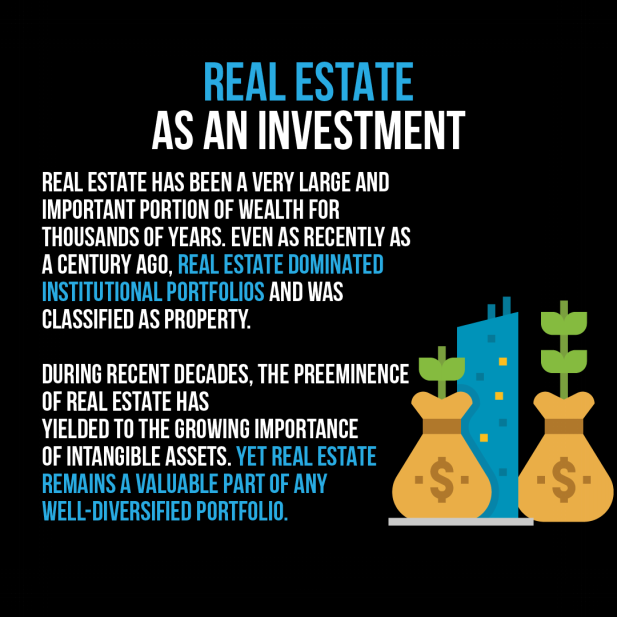¿Qué es la inversión inmobiliaria?
Objetivos clave de aprendizaje:
Introducción: Delve into the world of real estate investing in this section. By learning about the various strategies, potential returns, and inherent risks, you’ll be equipped to make informed investment decisions in the property market.
- Understand the Basics of real estate investing, which includes buying, managing, renting, and selling properties with the aim of generating profit.
- Differentiate the Various Investment Strategies such as buy-and-hold, property flipping, and investments in REITs or real estate mutual funds.
- Acknowledge the Potential Returns and Risks in the real estate market. Real estate has historically appreciated, but it is also subject to market fluctuations and other unforeseen challenges.
Equip Yourself with Effective Risk Management: Being aware of the potential pitfalls and having strategies to navigate them is crucial for long-term success in real estate investing.

Título de la figura: Fundamentals of Real Estate Investment
Fuente: Wall Street Mojo
Descripción: The figure pertains to the broader theme of real estate investment, as derived from the context provided. The image might showcase various elements related to real estate, including types of properties (residential, commercial, industrial), potential returns, risks, and investment strategies.
Conclusiones clave:
- Diverse Investment Avenues: Real estate provides a myriad of opportunities, from investing in residential homes to commercial spaces or raw land.
- Rentabilidades potenciales: Real estate investment can yield both passive income through rents and appreciation in property value over time.
- Risks and Challenges: The image might highlight the risks associated with real estate, like property management challenges, market downturns, and interest rate fluctuations.
- Strategic Approaches: Different investment strategies, such as buy-and-hold, fix-and-flip, or investing in Real Estate Investment Trusts (REITs), might be emphasized.
- Comparative Benefits: The image could also touch upon the advantages of real estate investment compared to other investment avenues.
Solicitud: Grasping the nuances of real estate investment is crucial for potential investors looking to diversify their portfolio. The tangible nature of real estate assets, potential for consistent rental income, and long-term appreciation make it an attractive investment avenue. However, it’s essential to approach it with a well-researched strategy, considering market conditions, property location, and individual financial goals.
Real estate investing is the act of purchasing, owning, managing, renting, or selling real estate for the purpose of generating a profit. Real estate can include land, residential or commercial buildings, or any other structure that can be bought, sold, or rented.
Real estate investing takes many forms, such as:
- Buying and holding a property to generate rental income
- Flipping a property by buying it, renovating it, and selling it for a profit
- Investing in real estate investment trusts (REITs) or real estate mutual funds

Cifra: This infographic highlights the enduring significance of real estate as an investment. It emphasizes that real estate has been a crucial part of wealth for thousands of years and, despite the rise of intangible assets, continues to be a valuable component of a diversified portfolio. This information is particularly useful for investors considering the long-term stability and historical importance of real estate in wealth building.
Fuente: Infografía personalizada
Real estate investing can be a great way to build wealth over time, as real estate has historically appreciated in value. However, it also comes with risks, such as market fluctuations, property damage, or unexpected expenses. A successful real estate investor must be knowledgeable, have a solid strategy, and be able to manage risk effectively. With the help of this course, you’ll be well on your way to mastering the art of real estate investing!

Cifra: The infographic outlines various strategies to generate income in the real estate sector. It lists methods such as becoming a landlord, engaging in real estate partnerships, undertaking fix and flip projects, investing in Real Estate Investment Trusts (REITs), wholesaling properties, participating in real estate crowdfunding, and delving into commercial real estate investing. For those looking to diversify their income streams, these strategies offer a range of opportunities within the real estate domain.
Fuente: Infografía personalizada
Conclusiones clave:
Frase de cierre: Real estate investing offers numerous avenues for potential gains, from passive rental income to appreciation in property value. Like any investment, understanding its intricacies and being prepared to manage risks is vital. This section lays the foundation for a successful real estate investing journey, focusing on the importance of knowledge, strategy, and effective risk management.
- Inversión inmobiliaria covers a vast spectrum, from land and residential homes to commercial establishments.
- Diversas estrategias: Investors can opt for buy-and-hold for passive income, flip properties for quick returns, or explore REITs and mutual funds associated with real estate.
- Historical Appreciation: Real estate properties have historically grown in value, offering long-term appreciation benefits.
- Associated Risks: Like all investments, real estate is not devoid of risks, including market downturns, unexpected property expenses, and management challenges.
- Knowledge and Strategy: A well-informed investor, equipped with a robust strategy, is more likely to achieve success in the dynamic world of real estate investing.

